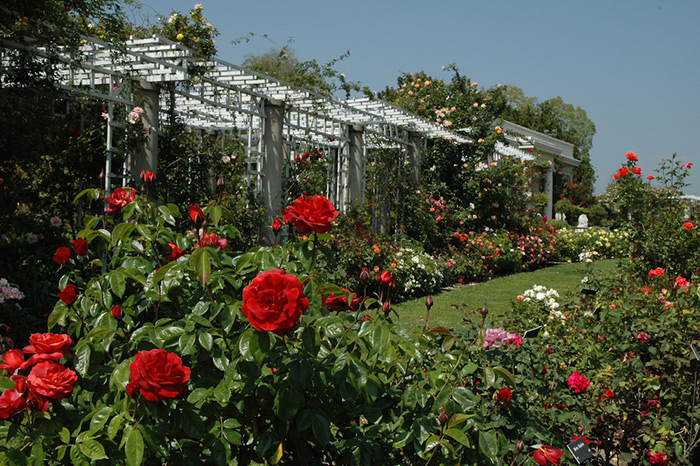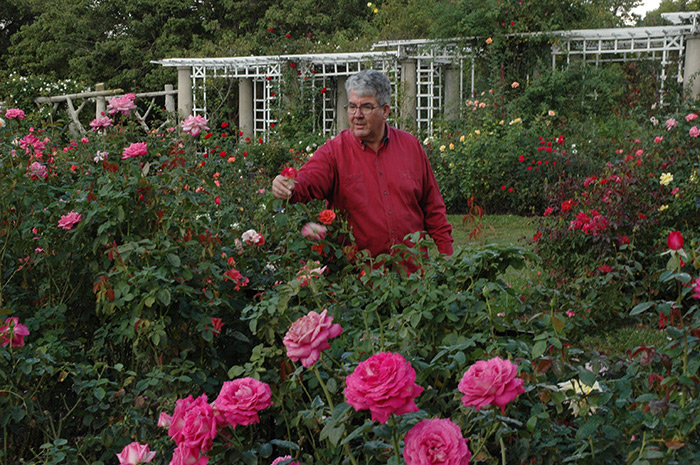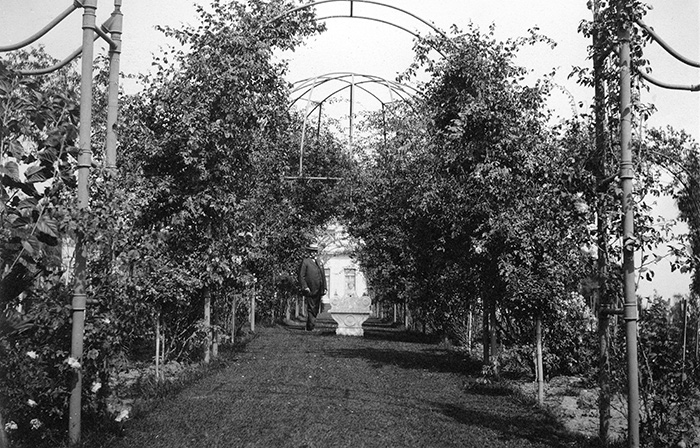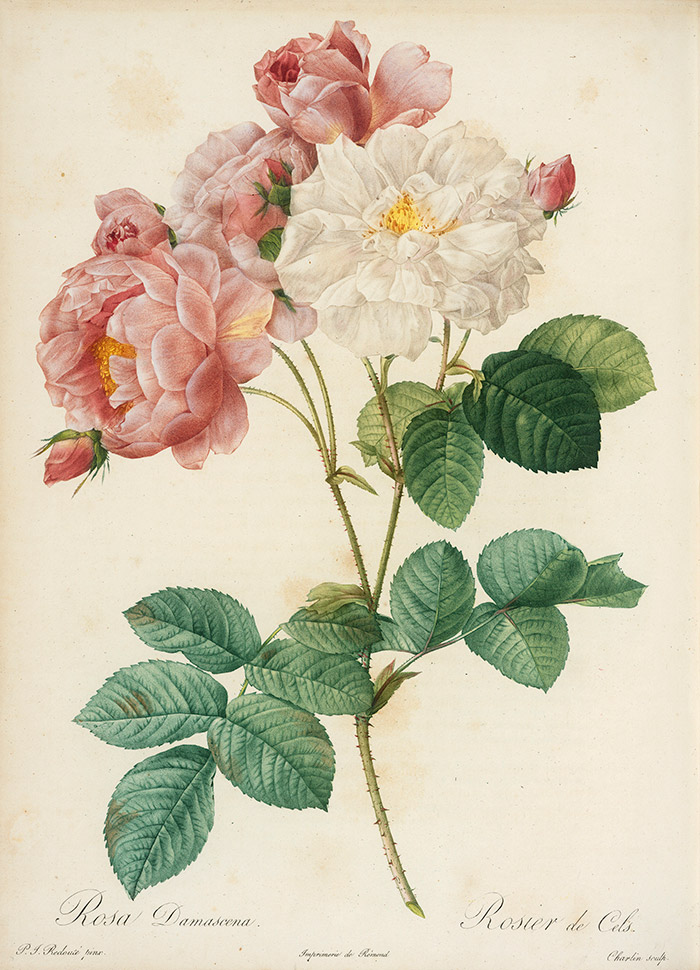The blog of The Huntington Library, Art Museum, and Botanical Gardens.
Tough Love for Roses
Posted on Tue., May 5, 2015 by

Less water, more blooms? The Huntington’s Rose Garden is more beautiful than ever, thanks in part to the smoky-red ‘Hot Cocoa’ roses (seen in the foreground), a hybrid by rose curator Tom Carruth.
When Tom Carruth started as The Huntington’s E.L. and Ruth B. Shannon Curator of the Rose Collection in 2012, California was already experiencing record-low precipitation. Carruth decided to do his part by cutting irrigation to the historic roses to twice a week, for just 15 minutes each time. Three years later, The Huntington’s 4,000 rose shrubs are doing better than ever—bursting out in huge, beautiful blooms, filling the air around the Tea Room with a heady mix of rose scents that hint at lemon, apple, and clove.
It turns out that cutting back on water was just what the (rose) doctor ordered. Carruth analyzed the soil and realized it had become saturated and highly compacted. Wet soil chokes a plant’s roots, limiting its ability to grow, he says.
“Reducing water gives roses the tough love they need,” says Carruth. “Like most plants, roses like moist, not wet, soil that allows oxygen to reach their roots. And the plants become even more vigorous as they send out new roots in search of water.”

Carruth says roses aren’t fussy. His advice: “Build healthy soil and try some tough love in the form of less water.”
Carruth also added a thick layer of mulch, which helps to retain moisture and keeps soil and delicate roots cool. Mulch breaks down over time, further boosting soil health. He also makes a twice-a-year amendment of gypsum, a water-soluble form of powdered calcium. In heavy clay soils, gypsum helps particles of clay stick to one another, creating spaces between which oxygen can pass.
Finally, he cut out chemicals. “We’re a no-spray garden,” says Carruth. “We let birds and other natural predators take care of insects rather than using pesticides.”
The Rose Garden dates to 1908. In addition to being a beautiful place where the Huntingtons could stroll, it helped satisfy Arabella’s penchant for large and elaborate arrangements of freshly cut garden flowers. Today, it comprises nearly 1,200 different cultivars that span the history of rose cultivation. One of the oldest varieties, ‘Autumn Damask’, can be traced to the first century. By contrast, the award-winning, smoky pink-purple ‘Cinco de Mayo’ is a more recent addition, developed by Carruth himself during his days as a rose hybridizer at Weeks Roses before he joined The Huntington.

Henry E. Huntington stands under an arbor in the Rose Garden around 1916. The Huntington Library, Art Collections, and Botanical Gardens.
As rose gardeners in California and elsewhere adjust to water restrictions—but are loathe to forfeit gorgeous blooms and heavenly scents—they might want to follow Carruth’s tried-and-true water-saving tips:
- Cover beds around the bushes with three to four inches of mulch.
- Irrigate in the cool morning hours.
- Use overhead watering to wash grime and dew off plants, and to better hydrate them in hot weather.
- Convert sprinkler heads to low-volume models.
- Cut back on automated irrigation, giving supplemental water by hand to new plantings.
- Use a small spade or a soil probe to check soil moisture. When soil becomes dry two to three inches below the surface, it’s time to water it.
Carruth’s overall message is that roses aren’t fussy. Build healthy soil and try some tough love in the form of less water, he says. They might just reward you with a spectacular show of blossoms.

This watercolor of Rosa damascena (of which ‘Autumn damask’ is one of two varieties) is by Pierre-Joseph Redouté, Les Roses, 1817–24. The Huntington Library, Art Collections, and Botanical Gardens.
Diana W. Thompson is senior writer for the office of communications and marketing at The Huntington.